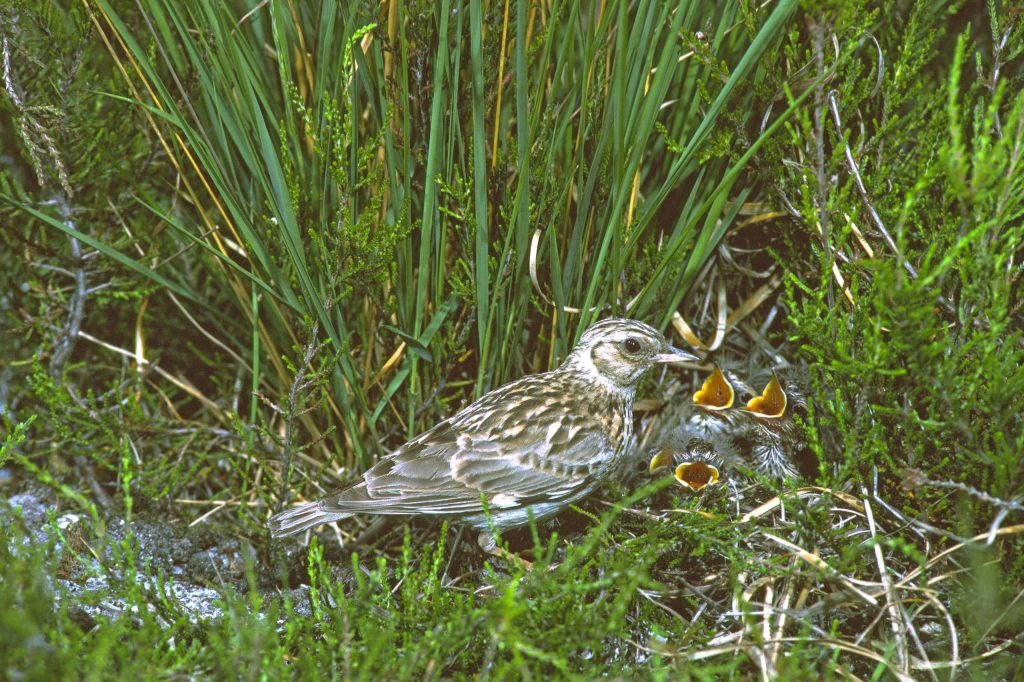A survey has revealed the highest ever numbers of woodlark in the New Forest.
The woodlark, which is a protected species of ground nesting bird, is only typically found in southern and eastern parts of the UK.
The Verderers of the New Forest Higher Level Stewardship (HLS) Scheme-funded survey has shown an increase in the bird’s numbers by more than 50 per cent over the past five years.
The scheme is managed by the Verderers of the New Forest in partnership with Forestry England and the New Forest National Park Authority, with support from the Commoners’ Defence Association and Natural England.
Forestry England and Hampshire Ornithological Society volunteers surveyed 300 square kilometres of the New Forest to record woodlark numbers. They counted a total of 260 breeding pairs, a big increase from the 167 recorded in the same survey in 2019. This makes the New Forest one of the UK’s most important locations for this species with around 10% of the population estimated to be found here.
The New Forest is a Special Protection Area for birds and the survey was carried out to help assess the impact of Forestry England’s work to boost the number of birds successfully breeding here. Over the last 15 years, the organisation has returned large areas of forest to heathland to create more of the habitat relied upon by many rare and protected birds and other types of wildlife.

Woodlarks are small birds with a streaky brown plumage and can be identified by their beautiful song, striking white stripes over each eye and spikey head crest. They nest on the ground in heathlands and areas of the woodlands where trees have recently been felled.
The New Forest is an important breeding location for these and several other species of rare ground nesting birds including lapwing, Dartford warbler, curlew and nightjar. Under pressure in many parts of the UK due to habitat loss and disturbance by people, with several species at a critically low level, helping these types of birds breed successfully is key to their survival.
Unlike most birds, ground nesting species build nests and raise their young on the ground around woodland edges and on the open heathland areas of the Forest. This makes it especially important to avoid startling parents causing them to flee their nests and leave eggs and chicks exposed to predators.
From the start of the breeding season in late February until the end of August, everyone spending time in the Forest can help these vulnerable birds by staying on the main tracks and keeping dogs with them there.
Leanne Sargeant, senior ecologist for Forestry England, said: “Many birds rely on lowland heaths to breed yet this type of habitat is now rarer than rainforest. The New Forest has some of the most extensive heathlands left in Europe and we are restoring and managing these to provide as much of this critically important habitat as possible.
“We have more to do, but it’s really rewarding to start to see species like woodlark returning and in such high numbers. Typically, these are one of the first species to return to restored areas and a good indication that the habitat is the right one.
“We are really grateful to all of the incredibly dedicated local volunteers who have spent many hours patiently watching and listening for these special birds.”
Nigel Matthews, lead co-ordinator of the survey for Hampshire Ornithological Society said: “Anyone spending time in the New Forest will know that it is a special spot for birds and a great place to hear and see many different species. Luckily our volunteers enjoy doing this too!
“They have spent hundreds of hours listening for woodlark calls and songs, watching them feed and tracking their movements. All of these observations have allowed us to create a full picture of the fortunes of these special birds and it’s really encouraging to know their numbers are so high.”